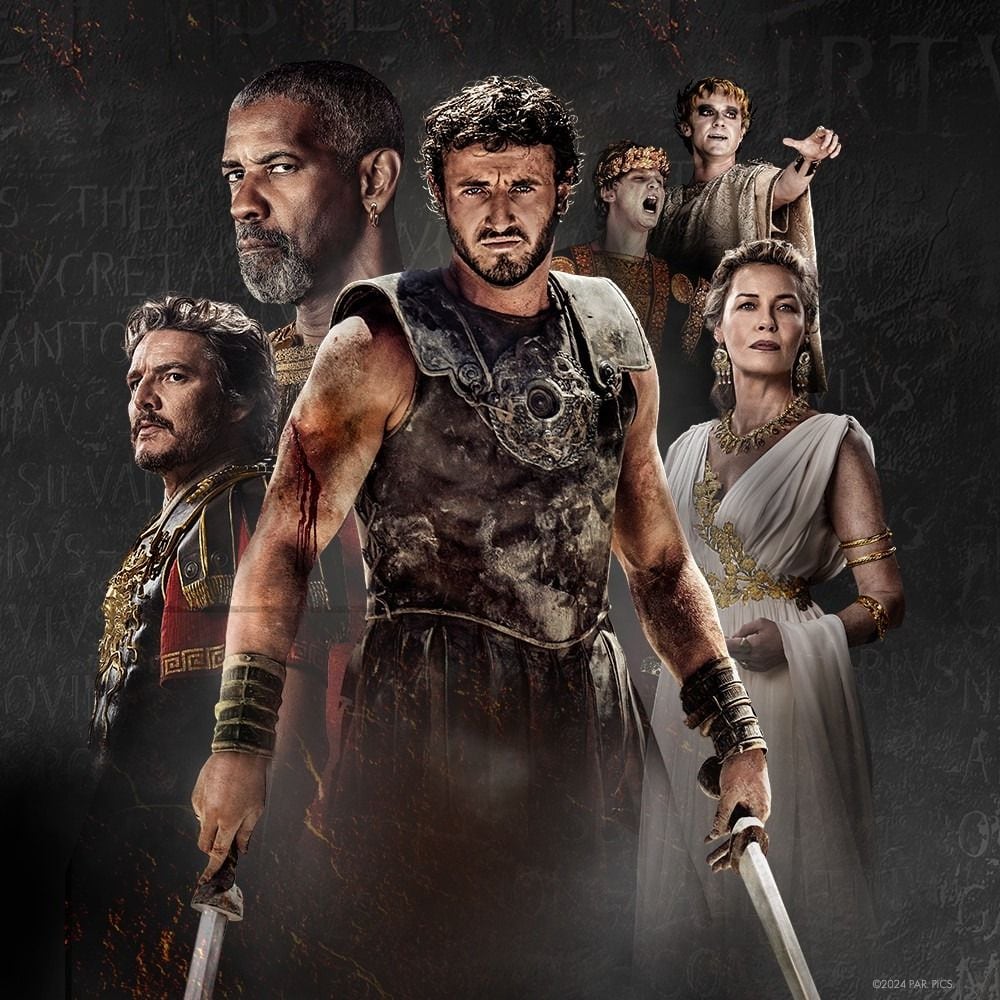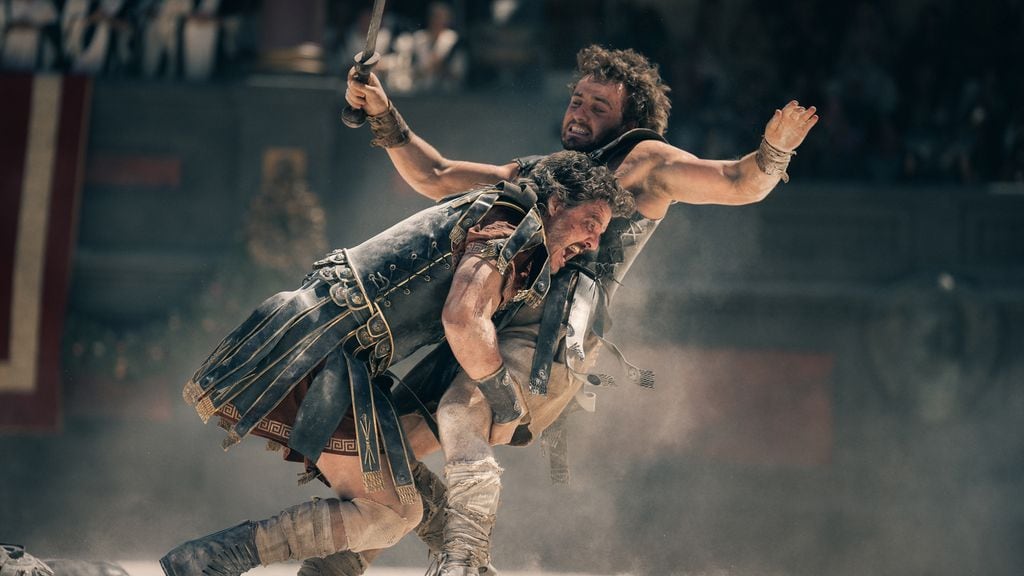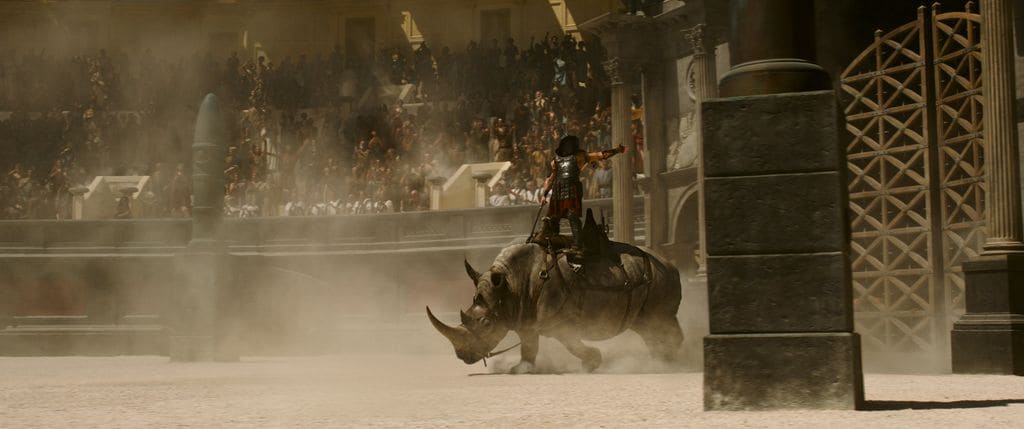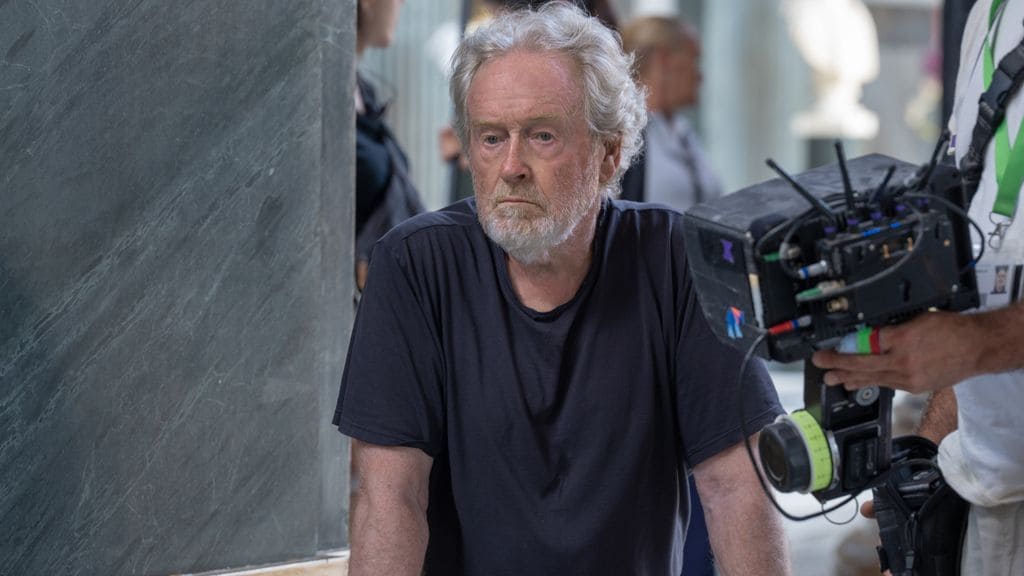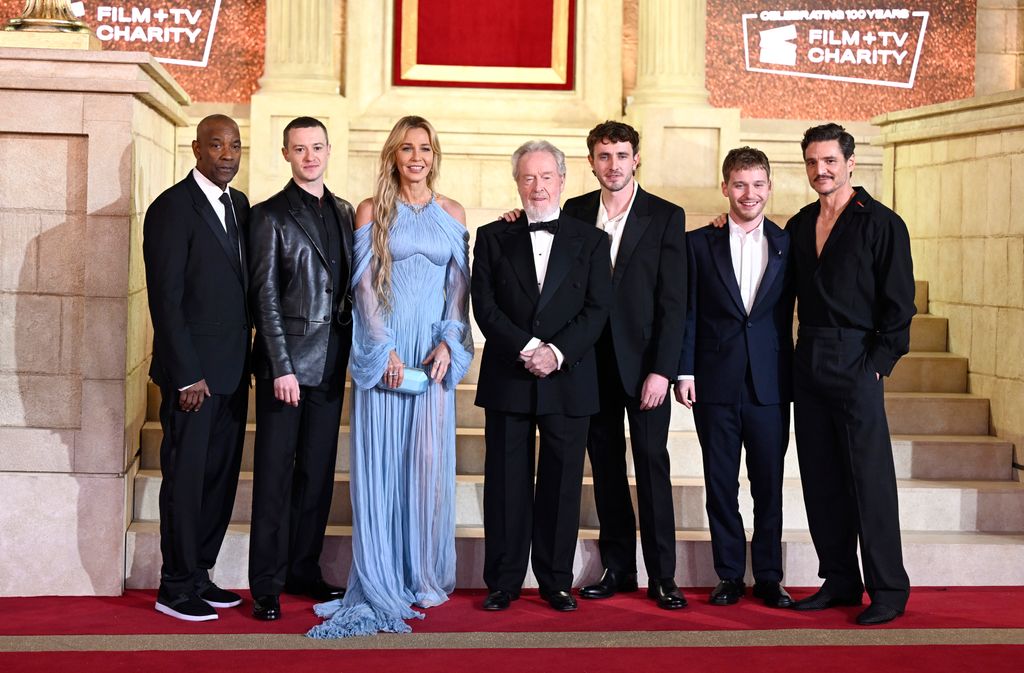Gladiator II directed by Ridley Scott is full of memorable action scenes that have managed to surprise the viewer from a bloody confrontation with computer-generated baboons to Paul Mescal mocking a rhinoceros, but none as impressive as the representation of a naval battle in the roman colosseumwith gladiators fighting in a flooded arena and shark-infested waters. This striking sequence is not only a delight to our eyes, but also a point of debate about the historical fidelity of the film.
Fiction or reality?
In Gladiator IIthe emperors Geta (Joseph Quinn) and Caracalla (Fred Hechinger) delight the crowd with a spectacular aquatic showdown. Although this scene may seem like extreme cinematic license, it is based on historical events known as “naumachias.” These were mock naval battles that took place in large basins or even flooded amphitheaters, such as the Colosseum. For example, Emperor Domitian organized one of these exhibitions in 85 AD. c.
However, the shark element seems to be a Hollywood exaggeration. Chris Epplettprofessor of Greek and Roman history at the University of Lethbridge, clarified to the entertainment website Vulture, that, although the Colosseum may have been flooded for a brief period before the construction of its permanent basement, there is no evidence that the Romans used sharks in their shows. Ridley Scott, always willing to play with the boundaries of history, defended the inclusion of these sharks, arguing that if they could build the Colosseum, they could also catch sharks.
Creation of the most striking scene in the film
To bring this monumental sequence to life, the team Gladiator II It combined advanced technology with studied planning. The director of photography, J.John Mathiesonexplained that the scene was filmed in two stages: first, dry, using mobile platforms called SPMT (Self-Propelled Modular Transporters), which allowed the movement of the boats to be recreated with precision. Then, The aquatic scenes were filmed in a gigantic water tank in Maltathe largest in Europe, with a depth of up to two meters and with an emerald green tint that gave even more originality to this scene.
The complexity of filming in water greatly delayed the process, making each shot take twice as long compared to dry scenes. Mathieson stressed the importance of filming from multiple angles simultaneously to ensure continuity of actions. For example, if an actor fell into the water in a wide shot, they would have to be seen falling in the close-ups as well.
Technology at the service of entertainment
The use of CGI (computer generated images technique) was key to achieving the spectacular nature of the scene. Although in the first Gladiator Primarily practical effects were used, the evolution of technology allowed Scott to create more elaborate settings and creatures. Mathieson used cameras Alexa Mini LF with zoom lenses to capture the action quickly, thus avoiding a lot of interruptions in filming.
Another significant advance was the use of telescopic cranes, that allowed filming from heights and angles impossible 25 years ago. This mobile and versatile technology was essential to capture the real movement of the vessels and the fights inside the tank.
The naval battle at the Colosseum unfolds as a dazzling spectacle, where Lucius (Paul Mescal), the protagonist, captains a ship and crashes into other vessels, unleashing visual chaos that culminates with gladiators and imperial guards facing off in shark-infested waters. Mathieson’s description compares this scene to a boxing match in Las Vegas during the 70s, and that tension of who will emerge as the winner.
‘Gladiator II’: an ambitious sequel
the movie, set 16 years after the outcome of the first installmentfollows Lucius, son of Maximus and Lucilla, who seeks revenge after the destruction of his home by the Roman army.
Gladiator II has managed to captivate global audiences, cementing its place as one of the most ambitious and visually striking productions in recent years.

